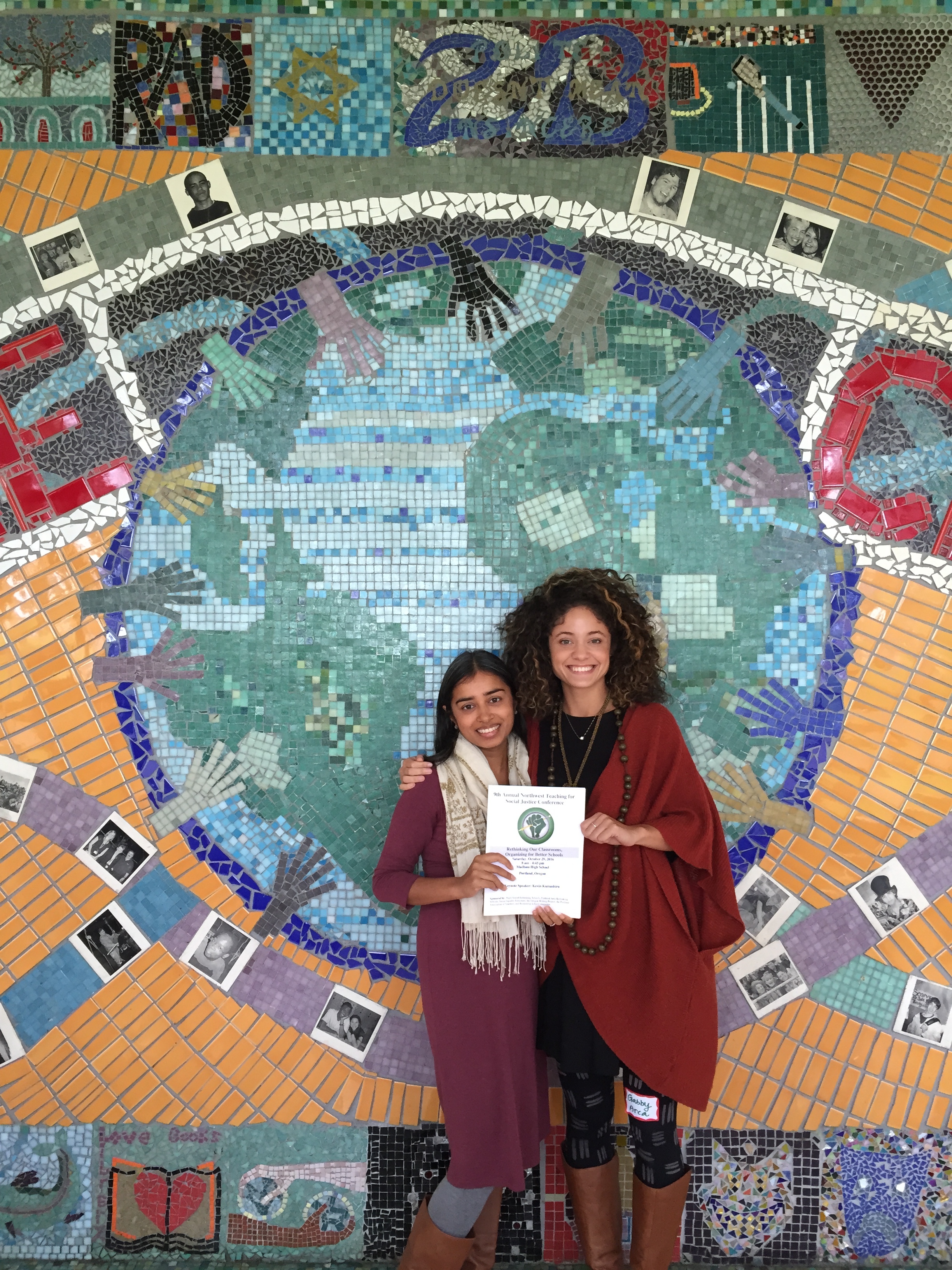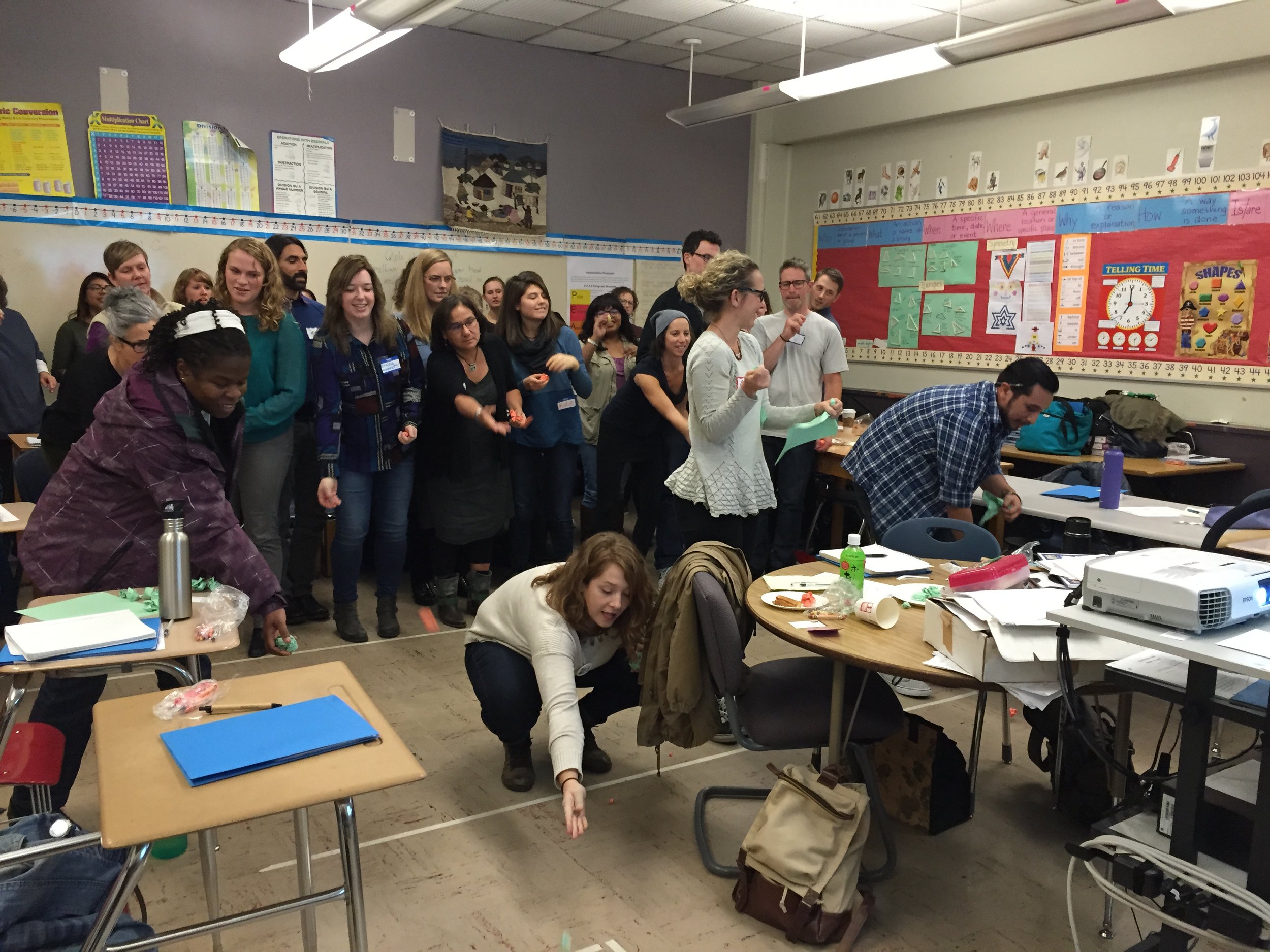My first day of school (with students present) is in a little over a week. My co-teacher and I are moving from 5th grade to 3rd grade, and although our students will be younger and more concrete, we will continue to talk about current events. We don’t have a choice. This work is too important to stop because it is scary, uncomfortable, or difficult.
You know your students and what will work best for them, but here are some ideas of how to adapt and use the Southern Poverty Law Center (SPLC)’s 10 Ways to Fight Hate: A Community Response Guide in your classroom. The 10 steps below are from their guide’s new edition.
A few reminders: if you are afraid that something is “too scary,” stop and think about students (and their families) who are already scared before they come to school. If you are afraid to be “too political,” remember that teaching is a political act. Everything you say - or don’t say - sends a message to your students about who (and what) really matters. Choosing to ignore hate is prioritizing the comfort of certain students over the safety of others. Tell yourself (and others if necessary): I am doing my best to make sure all students in my classroom feel safe, heard, and valued.
1. Act
We have had students write poems and persuasive essays, draw pictures, create posters, and empower us to sign petitions on behalf of our class (they are too young to take online action on their own). Ask your students what children can do to help and develop a “ways to fight hate” guide for your school, other children, your community - even very young students can think about and take productive action.
2. Join Forces
Ask students how can we join forces with others to fight hate.
This can be done as a class, school, or individual. Students can call on groups they belong to (religious, community, extra-curricular) and join forces with family members. You can also ask local groups that responded to hate event to visit the school/your classroom and help brainstorm how we as a class can act.
3. Support the Victims
A close friend of mine who is also a teacher alerted me to the #DearYoungPerson campaign to “send words of love and encouragement to the youth of Charlottesville through postcards.” In the past, we have had our students make cards, write letters, and create art in support of others.
Again, ask your students - how can we support the victims of hate? They have better ideas than we ever will.
Important reminder here: while there are clear and unequivocal victims of hate, prejudice and discrimination are dehumanizing and hurt all of us. I explain dehumanizing to students as not recognizing someone as a human being or seeing someone as less than a person. They understand.
4. Speak Up
Teach your students critical literacy. Teach your students to be active and discerning consumers of the media. We teach nonfiction critical literacy and how to detect author’s bias. Important questions: whose voice is heard? Who is quoted or legitimized as an expert? Who is producing and publishing the article? How might their perspective be biased? We also analyze language use: which words are repeated? Which words are left out? And of course, if we find a trend we always ask ‘Why?’
Students are not too young to write to the media. Write letters to the editor. Write letters to politicians. Ask to publish something in your school newspaper or newsletter. Create a class podcast. Even very young students can write a class letter or book, create a video, make posters, or more.
5. Educate Yourself
Ask your students what they would still like to know. Encourage them to think about what they know, what they are confused about, what they have questions about, and what they want to learn more about. Learn new vocabulary and practice explaining it to others. As best you can, enjoy the discomfort! There are always incredible humans, events, and movements of resistance to learn about.
One tool we love using as part of this process is a silent conversation. You can use it as described in the linked post, or with quotes or definitions for students to respond to and communicate about.
6. Create An Alternative
Ask your students: how can we create an alternative? Having a photo from an event or moment on the board and having them respond to it with thoughts and questions is an engaging and more tangible way to get the conversation started. Hold a unity rally or assembly for your school and invite community members and family members to attend. Organize an event with nearby schools.
Listen to your students. They will have ideas about how they want to counter hate. Asking them to brainstorm, plan, and organize is providing practice and opportunities to develop lifelong crucial skills.
7. Pressure Leaders
Ask students to brainstorm a list of leaders you can contact. Start with school leaders, and then continue on to community leaders. If students feel that their leaders acted appropriately, they can write them thank you letters and provide ideas for where to go next. Starting a relationship and opening communication will provide more opportunities for collaboration in the future.
8. Stay Engaged
Ask students: how can we stay engaged? How can we move out of our comfort zone? What networks (or what kinds of networks) can we reach out to or help create?
Starting a network (virtual or on paper or in person) with another school could be a good place to begin. But as always, ask your students and follow their lead.
9. Teach Acceptance
This is something schools and educators should try to do everyday. Don’t have a separate “social justice” or “diversity” day, lesson, class period, or assembly. Incorporate anti-bias education and social justice work into your instruction. Some resources are available below, but there are many more. Remember, other teachers are your best resources (apart from your students and their families). Communicate. Collaborate.
For teachers with less autonomy over their curriculum, critically examine the things you do control. Who is pictured on your walls? Whose voice is heard in your classroom? Whose books do you read? Who is depicted in those books? Even if you are required to use a certain textbook or specific literature, try and counteract biased narratives with quotes, images, video clips, and information.
10. Dig Deeper
We use various simulations to aid our students in confronting their own internal biases and internalized stereotypes. Our students are far more open to this work than most adults. Remember that identifying internalized biases and stereotypes is only the beginning. Next, you need to ask yourself: how did I internalize these messages? Where are they perpetuated and communicated?
Ask students: what do we need to learn about to help us counteract our own intolerance? They will have questions, ideas, and motivation to learn. Start with language in your school community. What hurtful, stereotypical, or dehumanizing words do we use? What else can we do to help our school community be more open and accepting of everyone? How can we practice “image replacement” in our classroom and community to counteract negative stereotypes about groups of people?
Children are much more flexible than adults. Keep their developmental levels in mind, of course, but remember that they can do this. By inviting them to share in finding actions and brainstorming ways to help, we empower them and show them that silence is not an option.
Resources
ILA’s Picks of #CharlottesvilleCurriculum Resources
Teaching for Change Social Justice booklists (helpful for younger students especially!)
Citizenship and Social Justice: Curriculum for White Americans to Educate Themselves on Race and Racism
Washington Post article summarizing best educator resources
ASCD Inservice: Resources for Addressing Racism and Hatred in the Classroom
Facing History: Facing Today Blog
Subscribe to our blog:



























